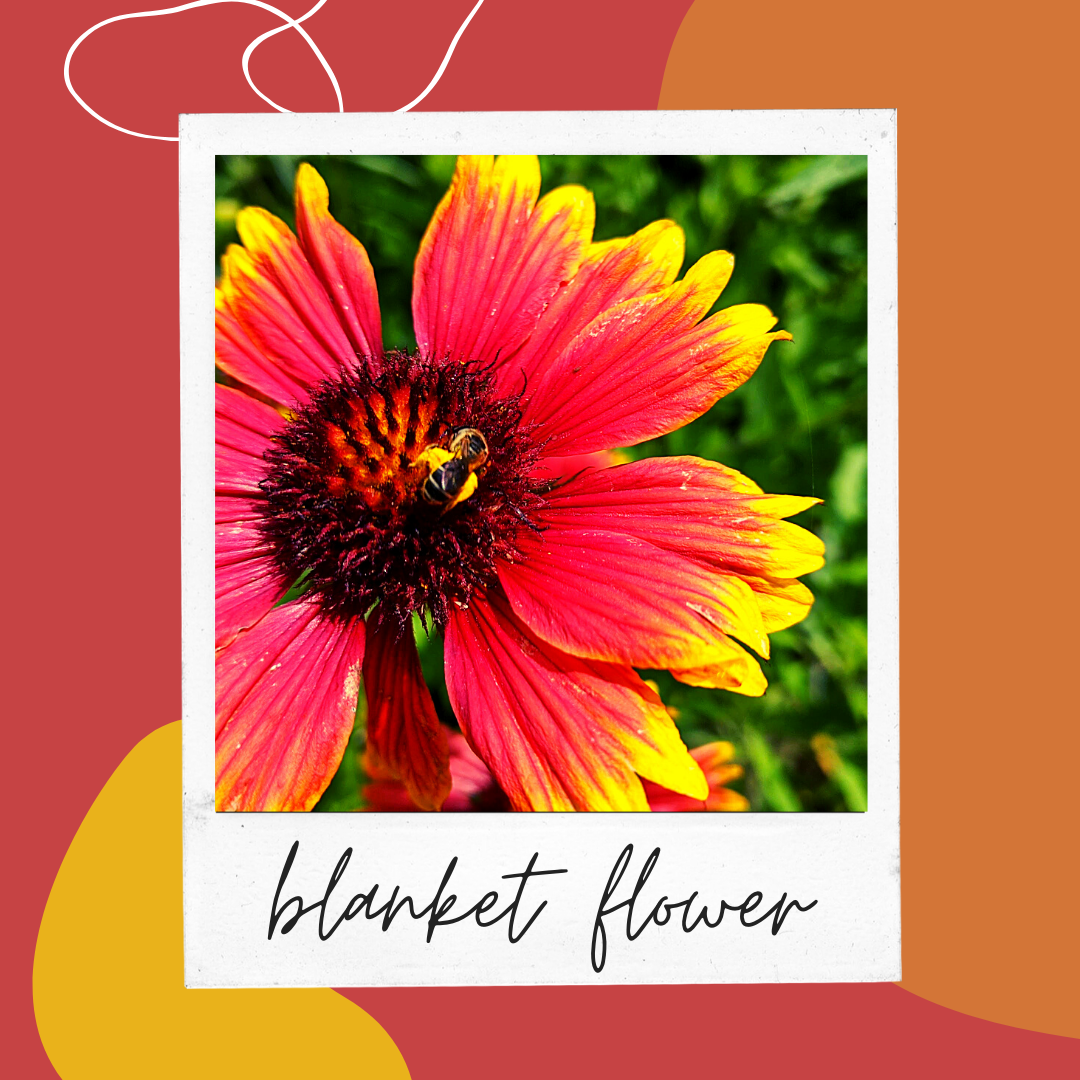
Download .pdf version
The petals of blanketflower resemble an early South Carolina summer sunrise with warm reds and yellows, and its beauty attracts pollinators and humans alike! Blanketflower—the common name for several widlflowers in the genus Gaillardia—blossoms in gardens and in the wild across many regions of North America. Of approximately one dozen species which are native to the U.S., two—G. pulchella and G. aestivalis—are native to SC. These plants thrive in so many regions and climates because of their versatility and tolerance for a wide variety of growing conditions.
The genus Gaillardia was dedicated to French botanist Gaillard de Charentonneau in 1788, and the common name refers to the lore that a meadow of blanketflower resembles the pattern and colors of a blanket woven by Native Americans. The name could also refer to the tendency of the plant and similar wildflowers to “blanket” over meadows and fields. One Native American legend has it that when an excellent weaver passed away, her grave grew over with blanketflower. Medicinally, petals of Gaillardia can be steeped into a tea to treat an upset stomach. The flower itself has been said to symbolize bravery and good luck.
Blanketflower does well in xeriscape (rocky and low-moisture) gardens, but it can tolerate somewhat damp soil. It grows best with full sun exposure, which also ensures the soil will stay dry as the otherwise low maintenance plant can fall victim to root rot, especially during periods of heavy rain. To plant blanketflower, sow the seed shallowly after the danger of frost has passed. Once the seed has germinated, it should take three to four months for the plant to bloom. The plants’ hairy stems grow up to three feet tall and produce showy, daisy-like flowers that have a red to yellow gradient.
Not only will a blanketflower complement any garden space, but it also provides a parade of pollinators. Blanketflower’s large and colorful flowers provide sweet nectar to pollinators like butterflies and bees. Goldfinches will swing by to nibble on the seeds after the flower has been spent, but the flowers can be deadheaded (trimmed) to extend blooms. One species of moth, Schinia masoni, also called the blanketflower moth, uses Gaillardia as a larval host plant. Adult moths use blanketflower to hide from predators, as its unique coloring acts as camouflage. The moth’s yellow head and thorax and red wings blend into the blanketflower blossom, protecting the moth from potential dangers.
Many species of blanketflower traditionally grew across prairie lands in the south- and mid-west, but many of those prairie lands no longer exist. Now, at least one species of Gaillardia is considered a Species of Special Concern in Minnesota after habitat loss has threatened the population. The loss of blanketflower and other prairie flowers devastated the Dakota Skipper butterfly population, which is now considered threatened under the Endangered Species Act. While large-scale prairie restoration is a long game, blanketflower populations can be supported (and, indeed, thrive) in home gardens. There are two popular garden species of Gaillardia: G. aristata (western, perennial) and G. pulchella (eastern, annual), both of which grow in Richland County’s USDA Hardiness Zone 8.
Blanketflower is one of the wildflower seed varieties offered through the Richland Soil and Water Conservation District’s Seed Sanctuary program that provides free seed to the public. To learn more about the program, visit www.richlandcountysc.gov/rswcd.
References: University of Texas, USDA, Missouri Botanical Garden, Minnesota Native Plant Society, U.S. Forest Service, Gardenia
Download .pdf version
# # #
Conservation Districts are political subdivisions of state government under the local direction of five-member Boards of Commissioners. In South Carolina, Conservation District boundaries conform to County boundaries. The Richland Soil and Water Conservation District promotes the wise use and care of natural resources for long-term sustainability.
Contact
Richland Soil and Water Conservation District
2020 Hampton Street, Room 3063A
Columbia, SC 29204
Phone (803) 576-2080
Fax (803) 576-2088
E-mail soilandwater@rcgov.us
Facebook www.facebook.com/rswcd